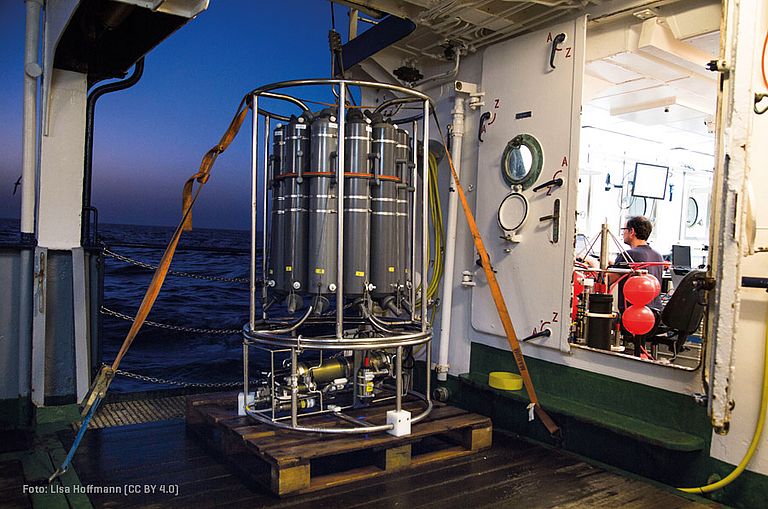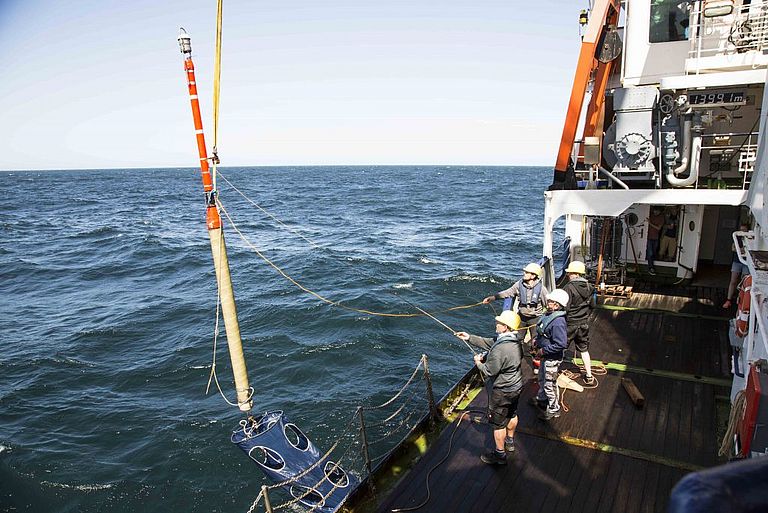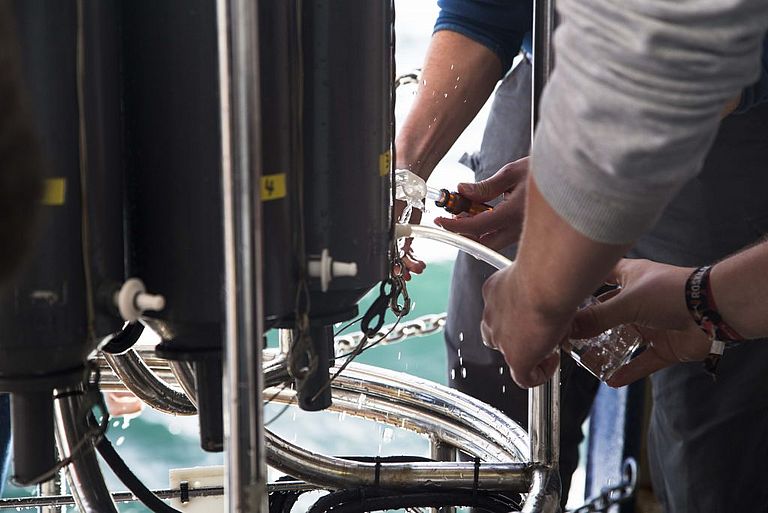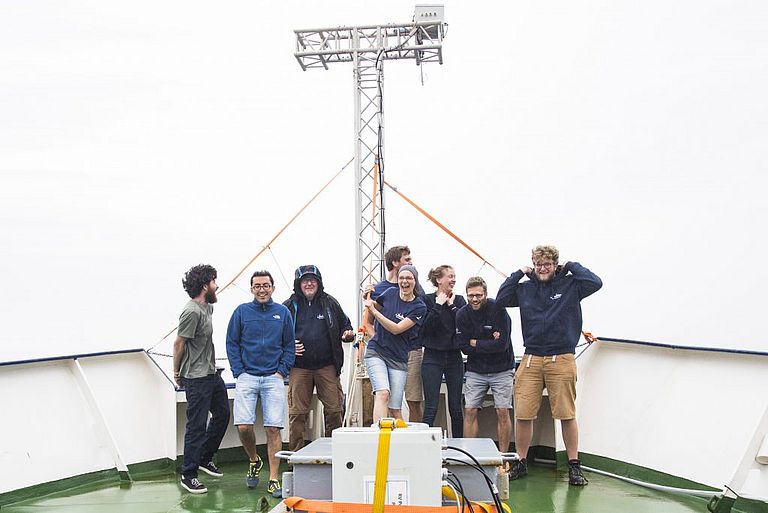Image of the month: April 2019
Research around the clock - Night watch during the POS519
Our image of the month shows a CTD rosette on board the research vessel POSEIDON during the expedition POS519. CTD stands for Conductivity, Temperature, and Depth, which is measured by pressure. A rosette consists of a CTD sensor and a number of niskin bottles. The open bottles are lowered with a long wire to depths of several thousand meters. In this way, a vertical profile of water temperature and salinity can be measured and water samples can be taken from various layers and transported to the surface. The scientists on board can close the bottles individually and automatically at any depth. Back on deck, the water can then be further analysed. For example, the oxygen and chlorophyll content can be determined.
The research expedition POS519 started on January 22, 2018 from Las Palmas de Gran Canaria and led to the coast of Mauritania. In this region, the scientists investigated so-called upwelling water patches and tracked them with measuring instruments. Such upwelled water patches are water masses from the depths that reach the surface and transport a high concentration of carbon dioxide and nitrous oxide. The gases are released into the atmosphere and simultaneously oxygen is absorbed. The water masses are particularly rich in nutrients and, with additional strong solar radiation, generate a high biological activity. In the process, surface films are formed which can impact gas exchange between the ocean and the atmosphere more difficult. During the expedition, chief scientist Dr. Tobias Steinhoff and his team carried out an extensive measurement programme both during day and at night to determine the influence of these biological surface films on the exchange of climate-relevant gases such as carbon dioxide and nitrous oxide. CTD measurements were also conducted in order to ultimately understand the processes within these upwelling water patches and their global effects.A special aspect of this POSEIDON research expedition was that it made a contribution to Open Science. The team published its laboratory diaries and measurement data on the internet during the expedition. This was supported by the program "Freies Wissen" of the Wikimedia Deutschland, the Stifterverband, and the VolkswagenStiftung. The aim is to support scientists who want to transparently structure methods, research data and publications. Photographer Lisa Hoffmann also assisted the researchers. She professionally documented the work on board the POSEIDON and made her pictures available under the Creative Commons license.
Further information:
https://www.geomar.de/de/forschen/expeditionen/detailansicht/exp/completed/345120/
Open laboratory diaries:
https://git.geomar.de/tobias-steinhoff/Poseidon-POS519
Blog of the work on the open sea:
http://www.oceanblogs.org/pos519/
Lisa Hoffmann's Website:






